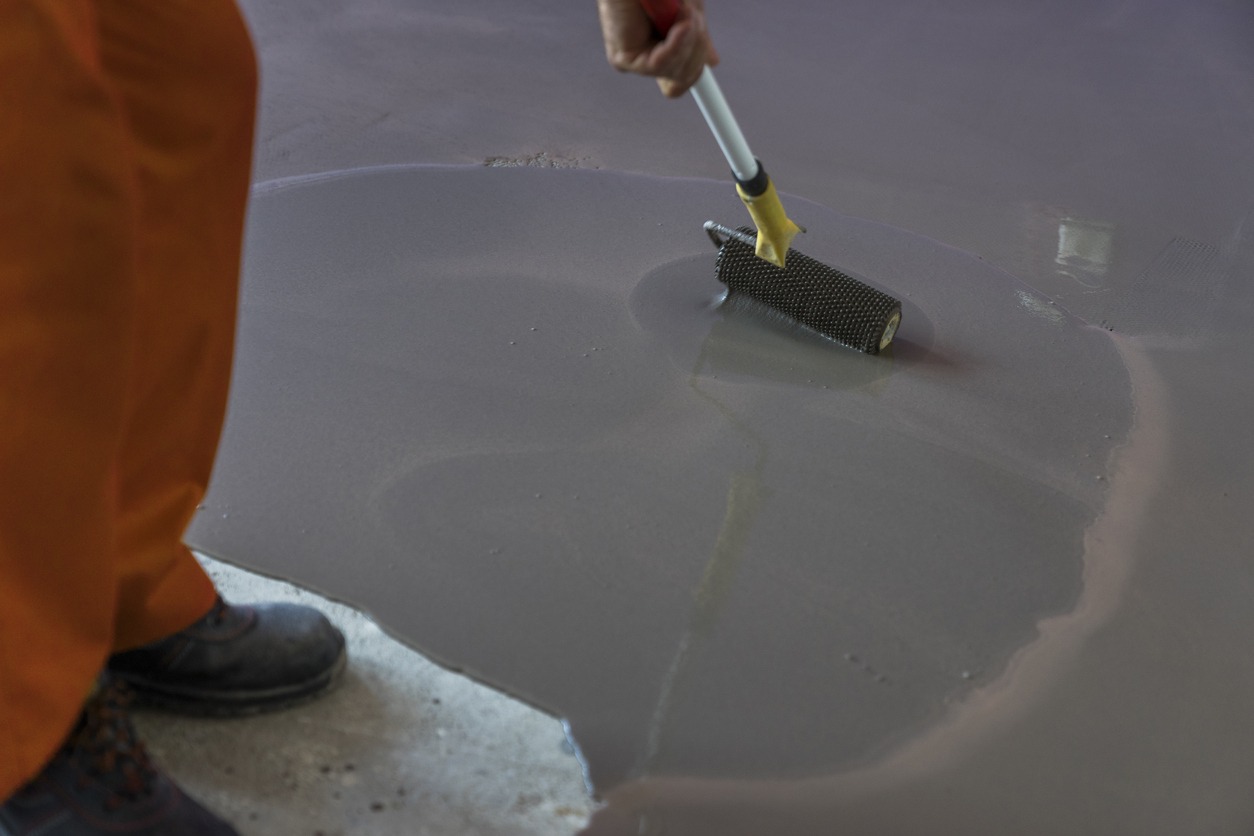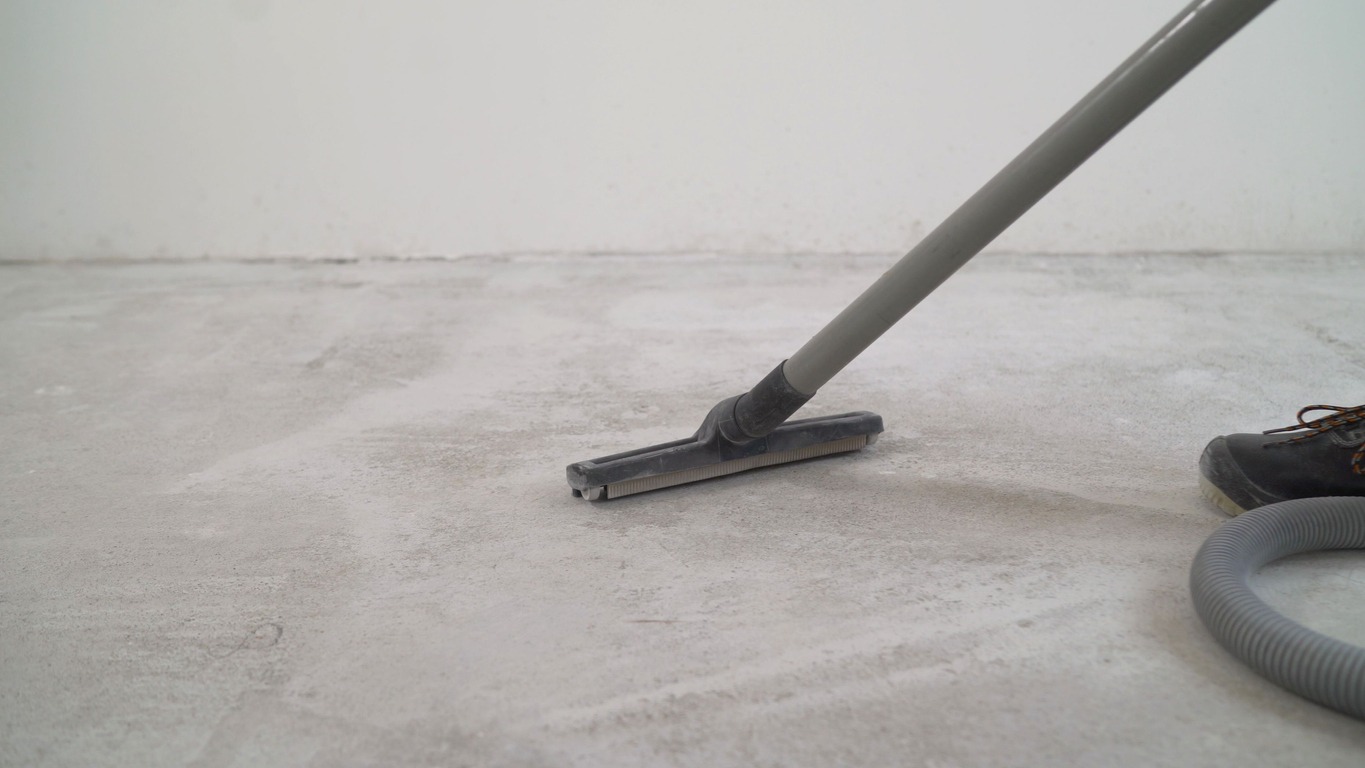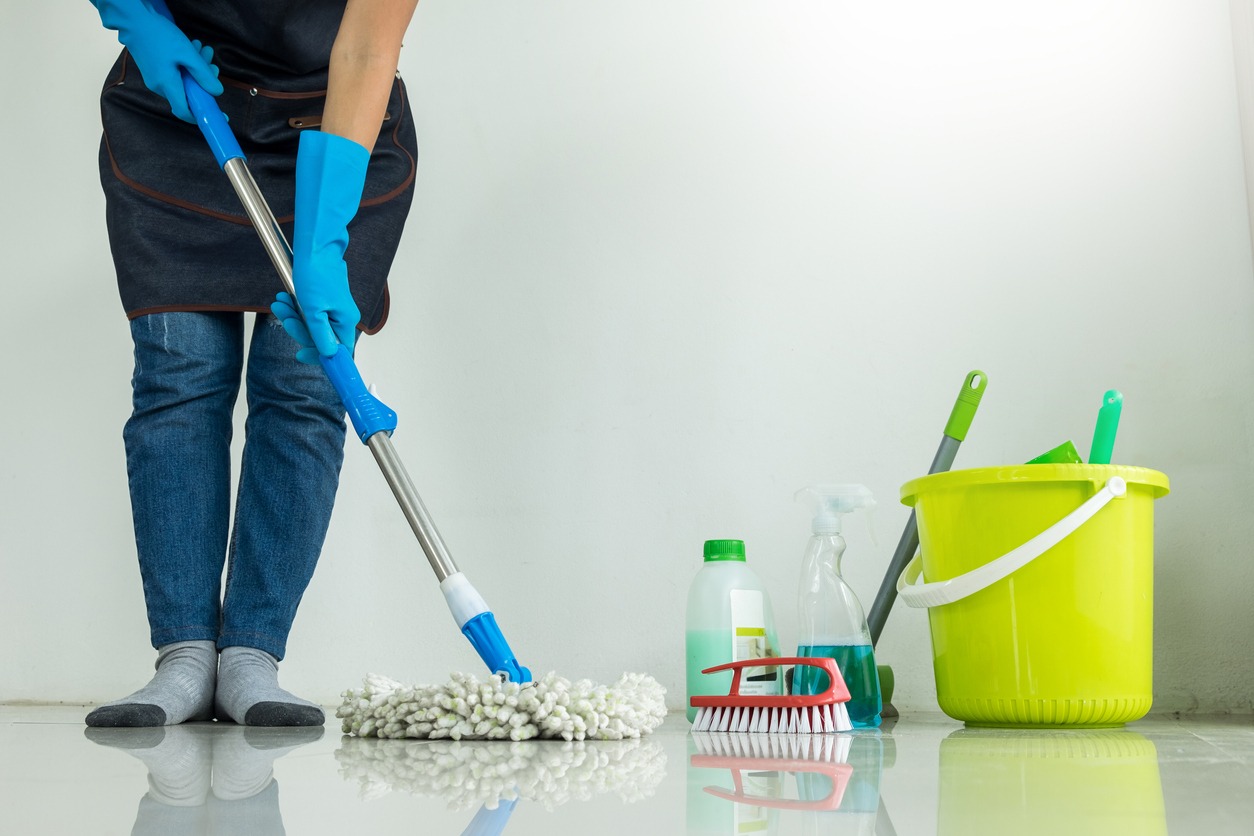Epoxy flooring is a robust and resilient surface created by applying epoxy coatings to different types of substrates, including concrete, wood, tile, and linoleum. Epoxy coatings consist of a two-part liquid resin and a liquid hardener, which, when mixed and applied properly, form a strong bond to the substrate. This eliminates the need for additional adhesives or primers.
With their exceptional durability and aesthetic appeal, epoxy garage floor coatings are becoming a popular choice for homeowners seeking a long-lasting, low-maintenance solution to enhance their garage spaces. These coatings provide a robust defense against common garage mishaps, and their benefits go beyond just aesthetics.
Whether you’re planning to hire professionals for installation or embark on a DIY project, it’s essential to know the intricacies of applying and maintaining epoxy garage floors. In this guide, we’ll explore the advantages of epoxy garage floor coatings and then delve into essential tips for installation and upkeep. Let’s uncover how epoxy can elevate your garage space.
Advantages of Epoxy Garage Floor Coatings
- Durability Epoxy garage floor coatings are celebrated for their remarkable durability, providing long-lasting protection for your garage floor. These coatings exhibit excellent resistance to various substances, including motor oil, gear oil, gasoline, bleach, acids, and solvents. Even prolonged exposure to vehicle fluids doesn’t result in unsightly stains. Epoxy’s toughness and thickness make it highly resistant to abrasion, ensuring it can withstand the weight and impact of common garage items, such as toolboxes, floor jacks, and weights without chipping.
- Easy Maintenance Maintaining an epoxy-coated garage floor is a breeze due to the seamless, sealed surface. Originally designed for industrial settings, epoxy floor coatings have been adapted for residential use, thanks to their exceptional durability. Cleaning an epoxy-coated floor is as simple as hosing it down, or if necessary, using a warm mop with a degreaser. The easy cleaning process ensures your garage floor remains in pristine condition with minimal effort, much like how fire stations maintain their epoxy-coated floors.
- Aesthetics Epoxy garage floor coatings not only offer durability and ease of maintenance but also an appealing aesthetic dimension. The appearance of your garage floor can be customized to your liking by choosing the style and color of the broadcast flake. Flake sizes range from small to large, allowing for various design possibilities. Smaller flakes create a modern and multicolored appearance, while larger flakes suit single-color installations. In modern residential applications, a smaller flake and a neutral color palette are often preferred, seamlessly integrating with the overall interior design.
- Slip-Resistance Enhancing safety, epoxy floor coatings can be made slip-resistant with the use of broadcast flakes. These flakes create an orange peel texture that significantly improves slip resistance, especially when the floor is wet. Choosing the right flake size is crucial for achieving optimal slip resistance. Medium-sized flakes are ideal for those seeking a high level of slip resistance. A well-thought-out choice ensures a safer environment, as opposed to big-box retail epoxy paint, which can be dangerously slippery when wet.
- Finish Options Epoxy garage floor coatings offer versatility in finish options, allowing you to tailor the appearance to your preferences. The recommendation of polyurethane topcoats over polyaspartic is common, as polyurethane topcoats are thin and can seal the broadcast flakes without compromising slip resistance. Furthermore, polyurethane topcoats come in both high-gloss and matte finishes, providing control over the final aesthetic. The matte finish, in particular, adds a modern touch to gray epoxy flooring.
- Added Benefits In addition to the core advantages mentioned above, epoxy garage floor coatings offer other benefits. They provide a layer of protection that minimizes damage to the underlying cement, reducing the likelihood of oil stains and offering resistance against certain solvents and salts. These coatings enhance the property value, making it more appealing to potential buyers. Furthermore, epoxy coatings improve safety by decreasing slippage, offering fire resistance, and withstanding extreme impact. They can also hide defects in the concrete, making them an excellent solution for addressing cracks in the floor. Additionally, epoxy coatings minimize dust, providing an anti-dusting benefit, and are moisture-resistant, helping protect the garage floor from water damage.
Tips on Installation and Maintenance of Epoxy Garage Floor Coatings
Epoxy garage floor coatings are a durable and attractive choice for protecting and enhancing your garage space. Let’s dive into the essential tips for both the installation and maintenance of epoxy floor coatings:
1. Tips for Applying Epoxy Floorings
- Surface Preparation: The key to a successful epoxy garage floor is thorough surface preparation. Ensure that the concrete floor is clean and free from dust, dirt, and oil. This might require pressure washing, degreasing, and patching any cracks or imperfections.
- Appropriate Mixing: To ensure precise mixing of the epoxy components, adhere to the manufacturer’s instructions.
- Working in Sections: It’s best to work on the floor in small sections, especially if it’s a large garage. This approach allows you to focus on applying the epoxy evenly without rushing.
- Use an Epoxy Roller: For a smooth and even application, use an epoxy roller to spread the epoxy on the floor. Roll it in one direction to avoid streaks and maintain uniform coverage.
- Add Decorative Elements: If you want to enhance the aesthetics of your garage floor, consider adding decorative elements like colored flakes or quartz. Sprinkle them evenly while the epoxy is still wet to achieve the desired effect.
2. DIY Epoxy Flooring
While many epoxy flooring installations are done by professionals, with some careful planning and following the steps mentioned above, DIY epoxy flooring is achievable. However, it’s crucial to remember the time constraints when working with epoxy, as it becomes unworkable within about two hours. Below is a step-by-step guide into epoxy flooring:
Step 1: Preparation is Key: Before applying epoxy coatings, proper preparation is essential. This involves moving any furniture, tools, or items from the garage, cleaning the floor thoroughly, and protecting the walls from epoxy stains with tape.
Step 2: Etching the Concrete: Etching the concrete floor is crucial to ensure proper adhesion of the epoxy paint. This process may involve using an acid etching product, but be sure to follow safety precautions. The etching product should be applied, allowed to sit, and then removed, leaving a roughened surface for the epoxy to bond with.
Step 3: Thorough Cleaning: Prior to applying the epoxy, ensure that the floor is completely clean. This includes vacuuming to remove dirt, dust, and debris. In some cases, a pressure washer may be needed to eliminate stubborn dirt and grime.
Step 4: Applying Base Coat: Epoxy paints have a short working time, typically about 2 hours. Pour the epoxy paint into a tray and apply the base coat, similar to regular painting. Keep a wet edge to avoid lap marks, and allow the first coat to dry for 12 to 24 hours before applying the second coat.
Step 5: Add Color Flakes: After the second coat, you can add color flakes to the wet floor. Ensure even distribution of these flakes for an attractive finish.
Step 6: Top Coat Application: Stir the hardener into the top coat, add anti-skid sand if desired, and apply the topcoat over the base layers. Allow the floor to dry for 2 to 3 days or longer if needed.
3. Ways to Maintain Epoxy Floorings
Proper maintenance is key to preserving the gloss and longevity of epoxy garage floor coatings.
- Regular Cleaning: Maintain the gloss of your epoxy floor by sweeping or mopping it at least once a week. Use a soft fiber cloth mop or mechanical floor scrubber with soft bristles, especially in high-traffic areas.
- Protect from Sharp Objects: Avoid placing heavy or rough objects directly on the floor. Use carpets, mats, or protective bases underneath items to prevent scratches or punctures.
- Clean Spills Promptly: While epoxy is stain-resistant, it’s best to clean spills immediately. Use warm water and a mop or deck-scrubbing brush. Avoid soap-based cleaners as they may create a haze on your floor.
- Use Entry Mats: Place mats at all entrances to protect the floor and create a comfortable environment. For garages, consider using mats and plywood to guard against heat and splatters.
- Household Floor Wax: Apply a high-quality household floor wax to keep your floor looking clean and neat. For tough tire marks and stains, use a concrete degreaser, which can turn liquid stains into powder for easy removal.
Conclusion
In conclusion, epoxy garage floor coatings offer homeowners a versatile, durable, and visually appealing solution for their garage spaces. The advantages of epoxy, from its remarkable durability and ease of maintenance to its customization options and enhanced safety, make it an excellent investment. Whether you choose professional installation or opt for a DIY project, the key lies in proper preparation, meticulous application, and regular maintenance. By following the guidelines provided, you can enjoy a pristine, long-lasting garage floor that not only withstands the test of time but also adds aesthetic value to your home. Epoxy garage floor coatings have truly transformed garage spaces, offering both functionality and style.




